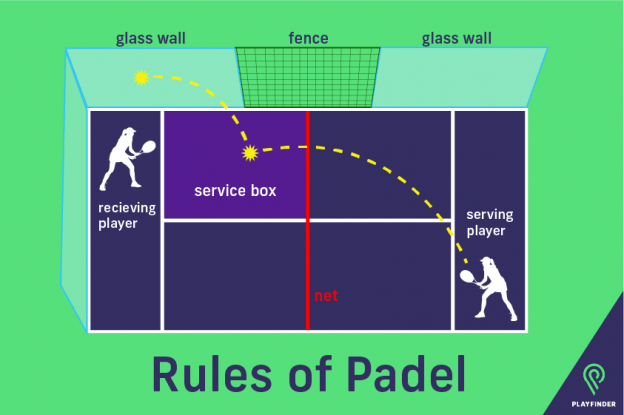Padel Court Size
27 February 2023 • By - Bert Pauw
Padel is a fast-growing racquet sport that originated in Mexico in the 1960s. It is similar to tennis, but played on a smaller court and with solid walls surrounding the playing area. Sports such as football and cricket have benefitted from innovations of shorter and simpler formats to increase participation, and with more Padel Tennis courts being built in the UK, padel looks to follow their example. In this blog post, we will discuss padel court size and which materials are typically used for their construction.
If you are new to padel and would like to have a go, check for your nearest padel facility here.
Padel court size
A padel court measures 10 meters wide by 20 meters long, which is roughly one-third the size of a traditional tennis court. The court is divided into two halves (making each side a 10 x 10 meter square) by a net that stands 88 centimeters high at the center and 92 centimeters high at the posts. The minimum height between the court and the ceiling (if covered) is 6 meters. The court is surrounded by walls that are 3 meters high on the sides, and 4 meters high at the front and back.
What is a padel court built from?
The walls of a padel court are made of glass or another hard transparent material, which does not affect ball bounce. The most common material used is either 10mm or 12mm toughened glass with countersunk fixings to avoid affecting the way the ball bounces.
When it comes to building a padel tennis court, there are different options for the surface material. While concrete, wood, and artificial turf are the most common choices, other materials can also be used, as long as they provide a consistent rebound for the ball. In addition to the material, the colour of the court is also an important consideration. To ensure a clear contrast between the court base and the walls, a single colour should be used for the court base and it should be applied uniformly. This not only improves visibility for players and spectators alike, but also adds to the aesthetics of the court.

To ensure a clear contrast between the court base and the walls, a single colour should be used for the court base
Why the size of a padel court matters
The size of a padel court matters for several reasons. First, the smaller court size makes it easier for beginners to learn the game. The smaller court means less running and a shorter distance to hit the ball, making it easier to get started. Second, the solid walls surrounding the court add a unique element to the sport.
Players can use the walls to make shots that are impossible in tennis, such as hitting the ball off the back wall to make a shot that lands in the opponent’s court. Finally, the smaller court size makes padel a more social sport. It is easier to play doubles on a padel court because the smaller size makes it easier to communicate with your partner and cover the court.
Find your nearest padel facility here.





